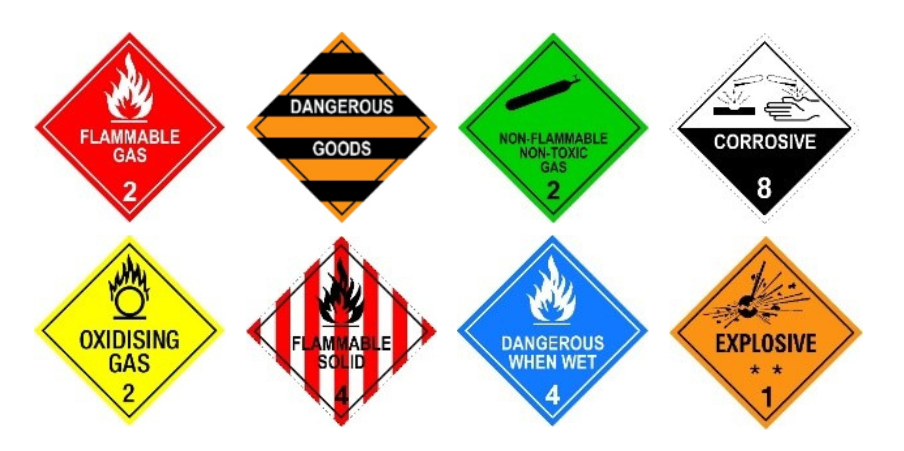Start moving in the
right direction.
Speak to us today to see how we can improve your business logistics, freight and customs related issues.

Shipping dangerous goods requires meticulous planning and adherence to regulations to ensure the safety of people, property, and the environment. This concise guide provides essential insights for businesses, logistics professionals, and individuals involved in transporting hazardous materials.
Ultimately, the shipper is responsible for identifying, classifying, declaring, packaging, and labelling the dangerous goods.
What are Dangerous Goods
Dangerous goods (DG) encompass materials that pose risks to health, safety, property, or the environment during transportation. These materials are classified based on characteristics such as flammability, toxicity, and corrosiveness.
Classification of Dangerous Goods
Dangerous goods need to be accurately classified and categorized according to international standards. The United Nations Committee of Experts on the Transport of Dangerous Goods (UNCETDG) provides a globally recognized system for classifying these substances. Each dangerous good is assigned a UN number, class and packing group, which determine the packaging and labelling requirements. If you are not sure whether your shipment is classified as dangerous goods, the manufacturer or supplier may be able to assist you with the classification or will provide a Safety Data Sheet (SDS) or a Material Safety Data Sheet (MSDS) to assist workers and others handling these materials to understand the potential risks and how to prevent exposure. If the SDS or MSDS shows or mentions a UN number in chapter 14, it is a dangerous good/s.
There are nine classes including sub-classes of dangerous goods, and it’s important to know which products fall into them. Whilst some items are obviously dangerous, others may surprise you. For example, paint or perfumes are hazardous as they are flammable and computer equipment as they may include magnets, batteries and printing ink. Other examples include frozen food which could contain dry ice and dental equipment which may contain resins, solvents or fuels.
The Australian Dangerous Goods Code provides more information about the classifications and divisions of dangerous goods, and if they are assigned to a packing group.
The nine classes and sub-classes are outlined in the chart below, along with their representative labels:

Packaging
In most cases it is a requirement to use certified packaging with unobscured United Nations specification markings. The appropriate packaging for the specific dangerous good is selected from the assigned packaging group, to withstand the potential hazards associated with the specific material being transported. The packaging is marked to indicate that it has been tested for certain required capabilities needed to transport the dangerous goods. Whatever packaging is selected, for example drums, boxes, or cylinders, it must comply with regulatory specifications for strength, leakage prevention, and compatibility with the contents. See the current International Air Transport Association IATA DG Regulations (air), International Maritime Dangerous Goods IMDG (sea) or Australian Dangerous Goods ADG code (road) regulations to find out if your shipment requires certified packaging.
Documentation
When shipping dangerous goods, it is crucial to provide accurate and detailed shipping documents that comply with international regulations such as the International Maritime Dangerous Goods (IMDG) Code, the International Air Transport Association (IATA) Dangerous Goods Regulations, and the International Civil Aviation Organization (ICAO) Technical Instructions.
Whatever mode of transport is utilised, shippers of dangerous goods need to ensure that they have the correct documentation.
For airfreight:
For sea freight:
For road and rail freight:
Labelling
Packages need to display hazard labels (as shown in the chart above), markings, and shipping names as required by the regulations governing the mode of transportation for the countries of origin, transit and destination. Clear and visible labels help emergency responders and transport personnel identify potential risks and handle the materials accordingly. In addition to checking which laws and regulations apply, also check your carrier’s requirements, before shipping.
Class labels for dangerous goods based on the UN Model Regulations are available to download from the National Transport Commission (Australia): https://www.ntc.gov.au/codes-and-guidelines/australian-dangerous-goods-code They can also be purchased through IATA and other providers.
Here is an example of the typical labelling requirements for air-freight, according to IATA regulations:




Examples of other labels that may be required:

Legal Compliance
Businesses and individuals who ship dangerous goods, need to adhere to and stay informed about the national and international regulations governing the transport of hazardous materials in each mode of transportation – air, seas, road, and rail. You should familiarize yourself with regulations such as:
It is important that everyone involved in transporting dangerous goods understands their responsibilities to help prevent and reduce damage to people, property and the environment.
Shippers must obtain the necessary permits and certifications to transport dangerous goods legally, including permits for hazardous waste transport, dangerous goods training certifications, and compliance with specialized transport regulations.
Packaging, Handling and Storage Guidelines:
Follow these guidelines for the safe packaging and handling of dangerous goods:
Compatibility: Ensure packaging materials are compatible with the transported goods to prevent leakage or hazardous reactions.
Overpacks: Consider using overpacks for multiple packages – larger containers that enclose and protect individual packages. Overpacks should be properly labelled and documented.
Segregation: Avoid combining incompatible substances in the same shipment to prevent reactions during transportation. Segregate materials according to their hazard classes and packing groups. Usually, separate containers are enough, but some DG will need to be transported in different vehicles.
Safe Work Australia have issued guidance material on “Managing Risks of Storing Chemicals in the Workplace” which includes a handy segregation chart, with recommendations and segregation types.
Cushioning and Padding: Use appropriate materials to protect contents from damage.
Documentation Accuracy: Ensure shipping documents accurately reflect contents, quantities, and classifications. Any discrepancies can lead to delays, fines, or even legal consequences.
Storage temperatures and flashpoints: Certain dangerous goods need to be kept below certain temperatures to prevent dangerous reactions from occurring. Also, you would need to know the flash points of flammable goods to avoid fires or explosions. This is the lowest temperature that can cause flammable vapor to ignite (when an ignition source is applied).
The National Transport Commission outlines the different factors regarding storage temperatures and flash points in the document “Australian Code for the Transport of Dangerous Goods by Road and Rail”.
Transportation Modes
Consider specific guidelines for each transportation mode:
Road Transportation: Follow national transport regulations, equip vehicles with safety equipment such as fire extinguishers and spill containment kits, and provide specialized training for drivers. Specialised couriers in Australia are only able to transport a limited selection of dangerous goods. Internationally, requirements will differ across countries.
Refer to The Australian Code for the Transport of Dangerous Goods by Road & Rail (ADG Code) for requirements.
Rail Transportation: Adhere to the International Union of Railways (UIC) and national railway authority regulations, ensuring proper placarding and secure loading procedures.
Maritime Transportation: Comply with IMDG Code, package goods for marine shipments, and provide accurate documentation to the ship’s crew. Goods need to be classified, labelled and packaged relevant to marine shipments considering factors such as vessel stability and compatibility with other cargo. Special containers and packaging materials are utilised, along with detailed documentation about the shipment’s contents. The DG are loaded onto a designated hazardous goods area of a ship and the crew trained for handling these goods. The shipping route is also considered to avoid heavily populated areas in case of incident. For information on transporting dangerous goods by sea you can contact the Australian Maritime Safety Authority on +61 (2) 6279 5000.
Air Transportation: Follow IATA Dangerous Goods Regulations for safe air transport, adhere to the restrictions on the types and quantities of dangerous goods allowed, proper classification, labelling and ensure packaging meets air transport requirements including pressure differentials and temperature variations. Include detailed documentation about the shipment’s contents. As with sea freight, DG are loaded into designated hazardous goods areas and the plane’s crew trained to handle these goods safely. It is important to work with the airline and airport to ensure all safety measures are in place. For information on transporting dangerous goods by air please contact the Civil Aviation Safety Authority (CASA) on 131 757.
Emergency Response and Contingency Planning
Develop a comprehensive emergency response plan, including:
Training: Provide training for personnel involved in the transportation of dangerous goods covering emergency response procedures, hazard identification and the proper use of safety equipment.
Communication: Establish clear communication channels between all parties involved in the transport process, including shippers, carriers, emergency responders, and regulatory authorities.
Emergency Contacts: Maintain a list of emergency contacts, including local authorities, response teams, and 24/7 contact information for responsible parties.
Spill Response Kits: Equip vehicles and storage areas with spill response kits containing absorbent materials, personal protective equipment, and tools necessary for containment and cleanup.
Simulation Exercises: Conduct regular emergency response drills and simulations.
The National Transport Commission (Australia) have an Australian and New Zealand Emergency Response Guide 2021 intended for use by first responders during the initial phase of a transportation incident involving dangerous goods/hazardous materials.
Reach out to a Freight Forwarder specialised in handling dangerous goods
Safe shipping of dangerous goods requires a commitment to regulatory compliance, responsible practices, and proactive emergency response planning. By understanding classification, packaging, and handling requirements, businesses and individuals can navigate hazardous material transportation confidently, ensuring the safety of all involved parties and the environment.
If you transport any products that are deemed hazardous by the authorities, you must have the required approval to do so. If you fail to understand or declare dangerous goods you may be fined, prosecuted or even receive a jail sentence. Although the information on this website is a general guide to understanding, if you are unsure of the shipping regulations of all countries involved in a shipment of dangerous goods, and of your requirements, check with your carrier or on government websites prior to shipping.
If you have any questions or concerns about shipping dangerous goods or require assistance with choosing the right packaging for your dangerous goods, the team at Clarke Global Logistics are here to help.
As a your one-stop-shop, you can also trust the team at Clarke Global Logistics to handle the entire process of hazardous goods shipping for you. Our team of experienced customs and freight forwarding professionals will ensure the correct classification, packaging, labelling, documentation, transportation compliance and safe storage of your dangerous goods, all in accordance with IATA (air), IMDG (sea) or ADR (road) regulations.
Call us today on +61 3 9854 3000 or send an email to enquiry@clarkeglobal.com.au


Established in 1917, Clarke Global Logistics is a reputable Australian Customs Broker and Freight Forwarder; offering a totally integrated trade service both locally and globally.

Speak to us today to see how we can improve your business logistics, freight and customs related issues.